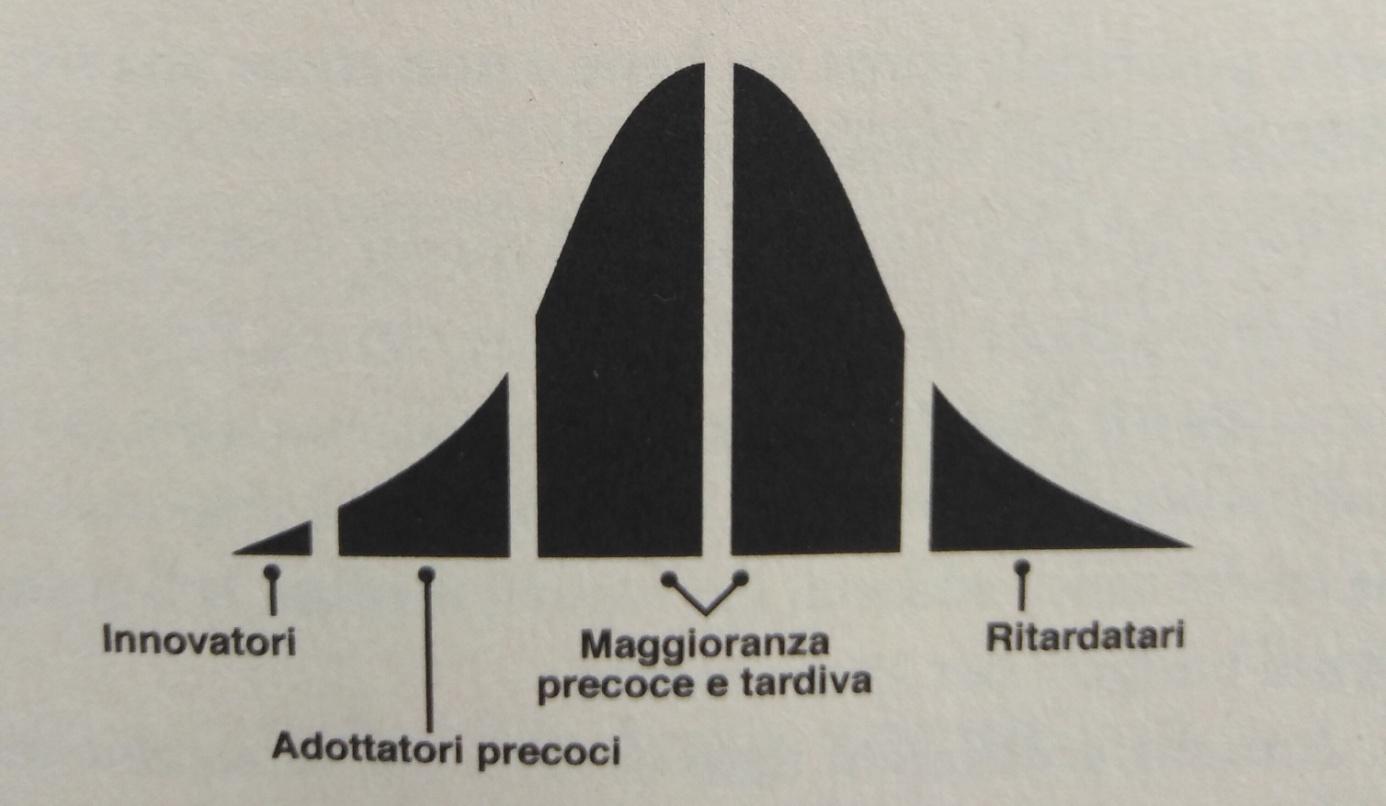THE MARKETING OF THE EXTRAORDINARY (by Romina Giovannoli)


When our economy was booming, it met almost all of our needs. Then everything changed from needs to meeting our desires. Marketing, with an abundance of TV commercials, had taught us to constantly want new things. Today there are so many products offered on the market that a large part of potential buyers will never know that a given product exists.
Consumers don't pay attention to many messages because they don't have the time to consider them, while competitors who have a certain market share are willing to spend huge sums to maintain it.
It is increasingly difficult to reach the public through permision media, or those means of communication that allow the consumer to decide whether he wants to accept the dialogue or not. The fact that a business has the e-mail address or telephone number of consumers does not necessarily mean that they are willing to listen to it; if they voluntarily decide to accept the telephone or e-mail dialogue they have an increasing tendency not to proceed with the purchase. Furthermore, the satisfied consumer attaches less and less value to the company's messages because they no longer solve his daily problems.
If the company wants to increase its market share or launch a new product or service, it faces a very demanding challenge as:
-
all the obvious goals have already been overcome, and consumers have fewer easily solvable problems;
-
consumers are difficult to reach because they tend to ignore it;
-
satisfied consumers are less likely than in the past to tell friends about products they are happy with.
From this observation Seth Godin, American writer and entrepreneur, deduced that the traditional P's of marketing are no longer enough, but a new one must be added that must have exceptional relevance.
Marketers talk about five Ps, but each of them has their favorite five to the point of getting to a larger number. Here are the P's of marketing:
-
Product
-
Price
-
Promotion
-
Positioning
-
Advertising
-
Packaging
-
Word of mouth
-
Permission.
The P added by Seth Godin is the P "Purple Cow", the Purple Cow. How did it come to this P? During a trip to France he had been enchanted by seeing hundreds of cows grazing in the gently rolling countryside which after a while I start to ignore because they all looked the same to the point of considering them banal. According to him, it would take a Purple Cow to arouse interest. So the essence of the Purple Cow had to be extraordinary.
The "extraordinary" must be something that emerges from the usual, that stands out and makes people talk about itself. So it is the novelty that arouses interest, it is the Purple Cow. The banal, on the other hand, is what does not attract our attention and therefore appears invisible to us, it is the usual brown-coated cow. This gives rise to the marketing of the extraordinary: “the art of creating products and services that integrate extraordinary elements that stand out. Not marketing intended as the last intervention to be practiced when the product has already been created, but marketing based on the principle that if it is not extraordinary in itself, the product is invisible ”(Seth Godin, 2004, p.4). Therefore, according to Seth Godin, the rule: “create common and reliable products and promote them with quality marketing” must be replaced with the rule: “create extraordinary products capable of attracting the right people”.
Geoff Morre in the book "Crossing the Chasm" described the ways of spreading new products and new ideas within the population through a bell curve in which the initial trait is made up of early innovators and adopters, the central and the final one. by latecomers. The horizontal axis represents the different groups the idea encounters over time, while the vertical axis represents the number of people present in each group. Here is the Moore curve:

Observing the diffusion curve of products and ideas, it can be seen that in any production sector, the new products and services introduced at the beginning are purchased by innovators, the beginning of the curve, that is, by those who, in a given market, want to be the first to have a certain product, which many times they do not even need, but simply wish to own it. They are followed by the early adopters to the right on the curve. Early adopters are those who can truly benefit from using a new product and who want to maintain a certain edge over the rest of the population by seeking out new products and services. After the early adopters there are the early and late majority, middle part of the curve, who are consumers who do not particularly want the product or service that offers them benefits, but if enough people try and talk about it, then it is very likely. that they too buy it. Keep in mind that this group is very adept at ignoring advertising because they have to solve problems that they consider more important than those they can solve with the advertised product and therefore they don't want to spend their time paying attention to advertising. They don't even pay attention to innovators. The early and late majority want protocols, systems, and safeties that new products rarely offer. Keep in mind that a lot of products can't even walk the curve far enough to reach these people. At the end of the curve are the latecomers, those who decide to buy the cassette walkman when everyone else has already bought the CD player. So they don't use anything new until the novelty is old enough to make what they used before obsolete, impractical or unavailable.
From the Moore curve we see that no one wants to adapt to new products. Most consumers are happy with what they have, they don't want to change anything or adapt to what's new, and marketing can't do anything. To promote the success of a product, it must be sold to those who love change, who are particularly attracted to novelty, who are actively looking for new products with the hope that the idea will spread and be able to pass from early adopters to rest of the curve. Early adopters once they have adopted the product, and not marketers, arrange for them to sell the product.
From the Morre curve Seth Godin concluded that "we need to create a product that is extraordinary enough to appeal to early adopters, yet flexible and engaging enough for them to easily spread the idea along the rest of the curve" (Seth Godin, 2004 , p. 45).
Seth Godin argues that a brand (or a new product) is nothing more than an idea and therefore ideas that spread are more likely to be successful than those that don't. To define the ideas that spread, he coined the term "ideavirus".
“ The main spreading agents of ideaviruses are those who ' sneeze ' and who, in so doing, spread the infection. They are the experts who talk to colleagues, friends and admirers about a new product or service on which their opinion is deemed authoritative. Those who sneeze release and support ideaviruses. Innovators and early adopters are those who first buy the product, but if they don't sneeze they don't spread the idea ”(Seth Godin, 2004, p.47). So in every market there are people who sneeze and identifying and seducing them is very important for the creation of a virus idea.
To create an idea that spreads:
-
you don't have to make a product for everyone that ends up becoming a product for nobody;
-
one must reach not the vast market, but a niche. And within this niche, an even smaller group must be identified and a specific ideavirus must be created that is capable of “infecting the small slice of the market in its entirety in which it is certain to provoke a positive reaction with respect to the product. Early adopters of this niche are more willing to listen to the novelty that is being proposed, its " sneezing " are more willing to talk about it, but, above all, the market is small enough for a modest number of people who sneeze to prove sufficient to achieve the critical mass necessary to create an ideavirus.
At that point, if you are good and lucky, the innovation spreads, and after having come to dominate the starting niche, it migrates towards the masses ”(Seth Godin, 2004, p.48).
Marketing in the post-television world cannot make a product attractive, interesting, pretty or fun after it has been created, but it must come up with a product that embodies the full potential of the idea from the very beginning.
To get the audience to listen, you must never propose a formula such as " a little less expensive " , " a little less better " or " a little easier " because "influential sneezers and those who have a problem to solve they are only willing to listen to those who have something extraordinary to say; he doesn't even notice everything else ”(Seth Godin, 2004, p.56). At the same time, it is also very important to be irresistible to a small group of virus spreaders, made up of early adopters, equipped with otaku (Japanese term used by Seth Godin to indicate a strong passion for something), because being irresistible means being extraordinary. In fact, those with otaku will take the trouble to get to know the product, try it by accepting the risks and tell their friends about it. Since not all markets have otaku consumers, you need to identify those markets where they are present, regardless of size, and focus on them.
In an increasingly intransigent and crowded market where customers are busy, the best strategy is the Purple Cow to grow or introduce something new.
Romina Giovannoli

Thanks to our Telegram channel you can stay updated on the publication of new articles of Economic Scenarios.
The article THE MARKETING OF THE EXTRAORDINARY (by Romina Giovannoli) comes from ScenariEconomici.it .
This is a machine translation of a post published on Scenari Economici at the URL https://scenarieconomici.it/il-marketing-dello-straordinario-di-romina-giovannoli/ on Sat, 28 Nov 2020 07:46:19 +0000.
